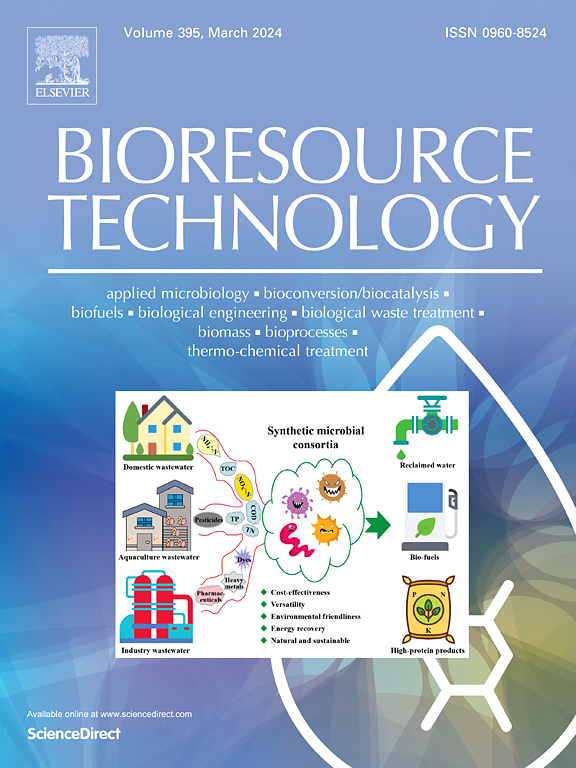Synergistic effects of Tween 20 and ethephon on yeast oil and β-carotene co-production by Rhodosporidium toruloides using purified biodiesel-derived crude glycerol as an alternative carbon source
IF 9.7
1区 环境科学与生态学
Q1 AGRICULTURAL ENGINEERING
引用次数: 0
Abstract
This study investigated the impact of chemical inducers on the co-production of yeast oil (YO) and β-carotene from purified biodiesel-derived crude glycerol. The objective was to enhance YO and β-carotene co-production in Rhodosporidium toruloides through the application of individual and combined inducers at both flask and bioreactor scales. Among the individual inducers, 1 % w/v Tween 20 (TW) and 10 ppm ethephon (EP) significantly increased total yeast oil (TO) and total β-carotene (TC) concentrations, respectively. When TW and EP were used together, TO and TC production increased by 2.0 and 2.6-fold, respectively in the bioreactor compared to the flask. The YO primarily consisted of C16 and C18 long-chain fatty acids, and the β-carotene produced showed functional similarities to commercial β-carotene. This research highlights the potential of biodiesel waste as a sustainable feedstock for co-producing YO and β-carotene, with the dual-inducer strategy providing a simple and effective method for enhancing production efficiency.

求助全文
约1分钟内获得全文
求助全文
来源期刊

Bioresource Technology
工程技术-能源与燃料
CiteScore
20.80
自引率
19.30%
发文量
2013
审稿时长
12 days
期刊介绍:
Bioresource Technology publishes original articles, review articles, case studies, and short communications covering the fundamentals, applications, and management of bioresource technology. The journal seeks to advance and disseminate knowledge across various areas related to biomass, biological waste treatment, bioenergy, biotransformations, bioresource systems analysis, and associated conversion or production technologies.
Topics include:
• Biofuels: liquid and gaseous biofuels production, modeling and economics
• Bioprocesses and bioproducts: biocatalysis and fermentations
• Biomass and feedstocks utilization: bioconversion of agro-industrial residues
• Environmental protection: biological waste treatment
• Thermochemical conversion of biomass: combustion, pyrolysis, gasification, catalysis.
 求助内容:
求助内容: 应助结果提醒方式:
应助结果提醒方式:


